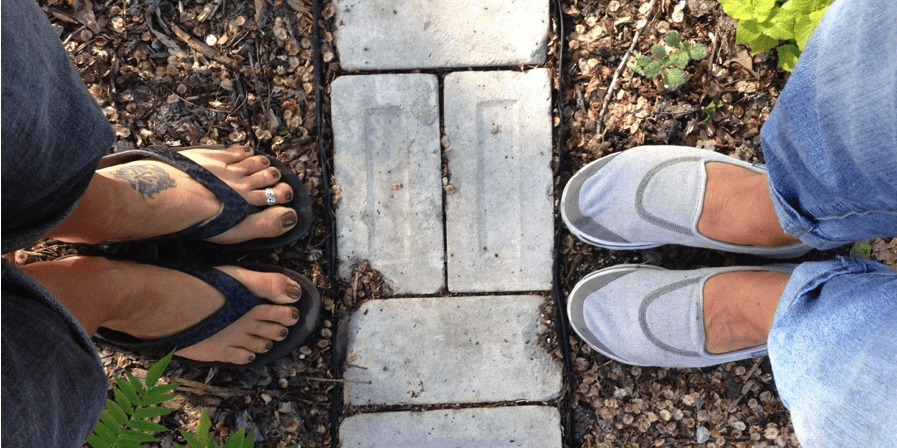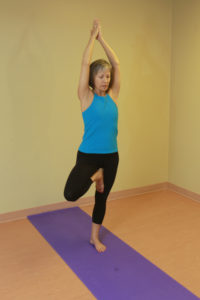Can you be friends with those you teach, mentor or coach? Some would say you can be friendly but must retain a professional distance. For what purpose, I wonder. Respect? Authority? Power? Ethics? When I consider the mentors I am most drawn to, the reasons I respect them have nothing to do with distance, control or ethical considerations. They are people whose actions imbue kindness, creativity and integrity.
Very early in my organization design career, I recognized being the youngest person in the room held little to no authority. Why would older white-haired men see me as an expert when I was only 30 years old. I had to find a different approach or model from which to bring forth transformation in those often more traditional organizations and individuals. The model that formed and grew over the years, and which I also apply to my role as a life coach, Yoga teacher and mentor, is that of a collaborator.
In every life event, we interact with something or someone. As people, we each bring to the relationship table our uniqueness and personal expertise with regard to strengths, passions and unknown potential. It is the combining of these separate unique qualities and expertise into an integrated whole that transforms all involved. This creative process occurs best when we attempt to work together, and the transformational results are the proof, often whether one consciously chooses to be transformed or not.
Collaboration does not mean entering into relationship with a premeditated agenda in mind — one where the teacher is the giver of wisdom. Rather, a vision is formed collectively through the voices of all participants from which a unified direction emerges as a result of their deliberations. This allows wisdom to be imparted from each in the collective when that person’s capabilities are most needed. Not everyone participates to the same degree, but the teacher-mentor-coach’s role is to facilitate wisdom finding for all. In most cases for the teacher, this means staying open and intuitively present to one’s own inner experience as well as to what is dynamically emerging in the group and in each individual.
…ultimately what is shared is the modelling of the teacher being completely authentic within themself and present within the moment. … the most important thing that can be shared is how to befriend yourself in all your dimensions, and as a result how you can be in friendship with others. Donna Farhi
In holding a collaborative learning space, a mentor can bring dialogue and understanding to felt authority and power issues, including dependent reactions of awe-struck students. I discovered that although having another shine the light of their awe on me felt empowering, it wasn’t. In fact, the opposite is true — awe turns to awful. Awe-struck students are unable to see their mentors as human, which creates a rude awakening when the human teacher inevitably falls off the elevated pedestal. The students’ awaken rudely because they hold their teachers responsible for their disappointment and project their anger and blame outward. In an authority or power-based teaching model, the awe-to-awful transformation is typical and often venomously painful. In a collaborative learning model, such dependency issues still emerge but understanding and personal responsibility are greater, which reduces much of the venom in conflicts and projections.
As to the question of whether teacher-mentor-coaches can be friends with their students/clients, I think the answer depends on the interpersonal skills and maturity of both parties in the relationship. There is no question it takes emotional maturity to hold someone else’s projected emotions at bay and not take them personally or not return the attack. However, isn’t this the life and Yoga journey for each of us — to find our centred silence and respond from that state of lightness and grace.
Nonetheless, immaturity has not stopped either students or teachers from moving beyond being friendly into unethical sexual relations. Lust is a powerful and often power-filled attractor but is not the same as the purposeful energetic attraction that occurs between two people whose paths are meant to cross. Unfortunately, our society has a hell of time differentiating between the two. Hence, the boundary I consistently draw with those I mentor is non-sexual. My responsibility is to facilitate a learning environment that supports their desired transformation. IMO, sexual relations muddy that intention.
On the other hand, I do believe we can teach-mentor-coach a friend, which I do with my friends every day and they return the favour, in like. Although Fahri states, “Mentorship sometimes requires me to challenge you [a student] in ways that would be inappropriate in a friendship”, I am of a different mind. I have always felt truth telling in friendship both empowers and deepens intimate connection so I expect my friends to challenge me with the truth regardless of my resistance. In turn, I pay the same forward to them.
One final note on boundaries — Rumi reminds us we are here to build bridges, not boundaries.
Love is the bridge between you and everything. Rumi
For more on collaboration and interpersonal bridge building, click here.





